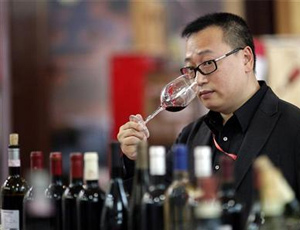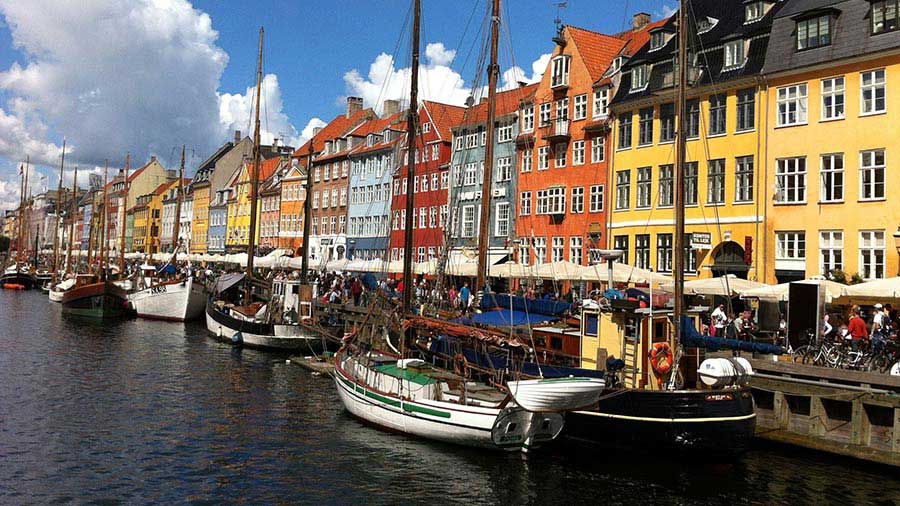Alternative Investments: China’s Rich Looking to Art, Wine and Jewelry
By Emily Liu
 As the Chinese economy powers ahead, it is catapulting many into the ranks of the wealthy and pulling large swaths of the population into its burgeoning middle class. According to consultancy group Knight Frank’s 2014 Wealth Report, there are currently 7,905 ultra-high net worth individuals (UHNWI) in China—the third largest such population in any country— and this number is set to grow by 80 percent in the next decade.
As the Chinese economy powers ahead, it is catapulting many into the ranks of the wealthy and pulling large swaths of the population into its burgeoning middle class. According to consultancy group Knight Frank’s 2014 Wealth Report, there are currently 7,905 ultra-high net worth individuals (UHNWI) in China—the third largest such population in any country— and this number is set to grow by 80 percent in the next decade.
Not surprisingly, these wealthy individuals, who have at least US$30 million in assets, are constantly in search of avenues to spend and invest their money. In Asia, 39 percent of UHNWIs expect to increase their spending on luxury goods in 2014. The Chinese appetite for luxury has been well documented, but as Chinese consumers mature and growth in the luxury market cools, the state of luxury consumption and investment is rapidly evolving.
With the Chinese economy undergoing reform and transition and the stock market’s continuing uncertainty, the wealthy in China are increasingly seeking to diversify their investments. Alternative investments, such as art, wine and jewelry, have risen in popularity, as they offer the opportunity to combine personal interests with stable, high returns, according to Hurun’s China Passion Investments White Paper 2013.
Since the global financial crisis, the drive for lower-risk investment avenues has boosted the popularity of these alternative investments in China, with 56 percent of high net worth individuals in China indicating an interest in alternative investments, making it the third most popular avenue after real estate (76 percent) and stocks (65 percent).
As the wealthy accumulate more riches, investment decisions will transition from the initial stage of investing for wealth creation to investing for passion and, lastly, to investing for spiritual fulfillment, according to Hurun, a China-based wealth institute and publisher of the “China Rich List.” In 2013, about 12 percent of the wealthy in China identified personal interest as their main purpose of investment, a strong sign of investor sophistication. Internationally, alternative investments now account for 8.3 percent of total Chinese investments overseas.
RELATED: Asia’s High Net Worth Individuals Concentrated in China & India
Interest in alternative investments may be growing, but services available in China to support the demand still lag behind. As much as 55 percent of high net worth individuals in China want to see more banks providing services related to alternative investments, including consulting services, loan financing and networking events.
Art
The Chinese art market, in particular, has been thriving. In the decade from 2002 to 2011, Chinese art auction sales rose meteorically from 0.5 percent of the world’s sales volume, to 42 percent, making it the second largest art auction market in the world. Interest in art is even driving real estate purchase decisions, with 51 percent of Chinese property investors citing space to display their art collections as the most important amenity for their real estate decision-making, according to Sotheby’s Luxury Lifestyle Report.
Chinese painting, accounting for about 40 percent of total art sales in China, is the most popular category among investors, followed by pottery and oil painting. 64 percent of high net worth individuals have invested in some form of artwork, and the number goes up to 81 percent among those with wealth above 500 million RMB. There is large potential for growth, with up to 22 percent of future investors in art being first-timers, according to Hurun. Interest is particularly strong among those younger than 45.
Economic restructuring and inexperience, however, pose obstacles for the nascent industry. When the art investment interest was at its peak in 2011, China had at least 45 arts funds, worth up to 5.5 billion in value. Economic restructuring in the past two years, however, has slowed down growth in these funds. As many of the funds bought in 2010-2011 mature this year, some are suddenly faced with the problem of paying off their debt, causing a stir in the arts industry. Analysts have identified the lack of investor experience with arts investment as a primary cause of the post-bubble mess.
Art investment in China remains a relatively young market that has a long way to grow in terms of infrastructure and regulation. Three-quarters of the wealthy in China who do not invest in art identified a lack of understanding about art investment as the primary cause of their hesitancy to do so. Other reasons cited include the lack of regulation and the uncertainty of investment risks. Nevertheless, there remain significant levels of optimism in the arts market. As much as 17 percent of the wealthy in China indicated a future interest in investing in an art trust fund, Hurun reports.
Alcohol
Unlike the market for art, the alcohol market has a much longer history in China, and continues on its upward trajectory as China becomes one of the world’s largest markets for beer, wine and spirits. Wine remains the preferred choice for investment among wealthy Chinese, and red wine is especially popular, with 90 percent of those who invest in wine choosing red over white. In recent years, numerous large wine trade and exchange platforms have been established, such as the Beijing International Wine and Spirit Exchange.
Unlike other forms of alternative investment, the market for wine is more mature and regulated, with various international grading systems and much higher liquidity. Wine makes for a particularly attractive investment for the wealthy in China, as it combines personal passion, investment and consumption into one, and is an important social currency between friends and business acquaintances. Almost half of high net worth individuals invest in some form of alcohol, three-quarters of whom identify personal interest as their main reason for doing so.
RELATED: China Releases 12th Five-Year Plan for the Wine Industry
The market for wine futures, however, has only just begun to develop and accounts for less than 10 percent of total wine transactions. Wine sales continue to be dominated by direct purchases, with 71 percent of wine investors making personal purchases domestically. About half of investors also employ agents to make their purchases.
Interest in investment via wine funds is beginning to grow, as the flexibility of choosing current or future wines and the low requirement of professional knowledge about alcohol provides an attractive avenue for new investors. Currently, although only 12 percent of wine investors have tried investing in a fund, as much as 41 percent indicated interest in pursuing it in the future.
Watches
Luxury watches have consistently been a popular form of alternative investment for their high resale value and low costs of collecting — unlike art and wine, which may require extensive space and infrastructure to store and protect them. In the past few years, consumption in wrist watches in China has been steadily growing, and prices have been stable. In light of the slower economy of the last 2 years, the market for luxury watches is gradually transitioning from an earlier phase of rapid, exponential growth to slower, stable growth for the long term, Hurun predicts.
The future of luxury watch investment, Hurun forecasts, lies in the market for antique watches and female wrist watches. Currently, about 10 percent of watch investors own antique watches, with the number likely to increase to 25 percent in the future, the largest growth segment in the market. As the technology and quality for female watches catch up to and even surpass those of men’s watches, analysts predict the popularity of watches for female investors is likely to rise.
RELATED: Demand for Luxury Goods Spilling Over Into China’s 2nd and 3rd Tier Cities
Analysts also expect opportunities for the acquisition of watch companies to come up in the future, as the market transitions from a rapid to a slower, steadier growth phase, creating excellent opportunities to buy into these companies.
Jewelry
Precious gems and jewelry is perhaps the most popular market for investment and consumption among China’s wealthy, with 60 percent of high net worth individuals currently investing in luxury jewelry. In 2011, China’s jewelry market accounted for 30 percent of the world’s sales volume, with sales hitting US$60 billion.
Diamonds, in particular, remain the crowd favorite and the preferred choice of 70 percent of Chinese investors. Expenditure on jewelry, however, is low at the highest end of the market, where more than 70 percent of transactions are under the 100,000 RMB mark.
Interest in jewelry is only set to grow in China. Demand is now moving towards gems with greater practical usage value, according to Hurun. Female investors, in particular, value gems that can be worn as accessories. Diamonds will also see their popularity decline, as interest shifts towards colorful gems such as emeralds and sapphires. Forty-one percent of female investors indicated interest in purchasing colorful gems, compared to just 18 percent of men, highlighting the potential for growth in the market for female accessories.
China’s economic transition has opened up many opportunities for its nascent alternative investment markets, and whilst the initial phase of rapid growth has cooled, there remains large potential for growth and development. The wealthy class in China is only set to rise, and as consumer tastes continue to mature and personal passion becomes increasingly important, businesses that support and cater to the markets for alternative investment would do well to take notice.
Asia Briefing Ltd. is a subsidiary of Dezan Shira & Associates. Dezan Shira is a specialist foreign direct investment practice, providing corporate establishment, business advisory, tax advisory and compliance, accounting, payroll, due diligence and financial review services to multinationals investing in China, Hong Kong, India, Vietnam, Singapore and the rest of ASEAN. For further information, please email china@dezshira.com or visit www.dezshira.com.
Stay up to date with the latest business and investment trends in Asia by subscribing to our complimentary update service featuring news, commentary and regulatory insight.
Related Reading
 China Retail Industry Report 2014
China Retail Industry Report 2014
In this special edition of China Briefing, we provide an overview of the retail industry in China and the procedures for setting up a retail shop, focusing specifically on brick-and-mortar physical retail stores. Further, we have invited our partner Direct HR to offer some insights on the talent landscape in the retail industry, as well as tips for recruiting retail personnel in China.
 Selling to China
Selling to China
In this issue of China Briefing Magazine, we demystify some complexities of conducting business in China by introducing the main certification requirements for importing goods into the country; the basics of setting up a representative office; as well as the structure and culture of State-owned enterprise in China. Finally, we also summarize some of the export incentives available in several key Western countries.
- Previous Article New Provisions on EIT Liability for Foreign Transportation Service Providers Set to Come into Force
- Next Article Raise or Fold: Changing the Registered Capital of a Company in China



























